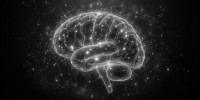
Revolutionizing Sleep Diagnosis with AI and Wavelets
Are sleepless nights soon to be history? This groundbreaking automated wavelet-based system, characterized by high accuracy and transparency, could definitely change sleep medicine for the better! Discover how this innovative approach, which uses a diverse data set and explainable AI, will revolutionize sleep medicine.
Revolutionizing Sleep Diagnosis with AI and Wavelets
 Sleep is an integral and vital component of human life, contributing significantly to overall health and well-being, but a considerable number of people worldwide experience sleep disorders.
Sleep is an integral and vital component of human life, contributing significantly to overall health and well-being, but a considerable number of people worldwide experience sleep disorders.
The Importance of Sleep: More Than Just Rest
Sleep is not just a period of rest; it is a vital component of overall health and well-being. Insufficient sleep can lead to a myriad of health issues, both short-term and long-term. Despite its importance, many individuals struggle with sleep disorders like insomnia, sleep apnea, and periodic leg movement (PLM).
Accurate diagnosis of these conditions is crucial, and traditionally, this has been done manually by trained sleep technologists. However, this method is labor-intensive and prone to human error.
Bridging the Gap: The Need for Automated Sleep Scoring
Current automated sleep scoring models have mainly focused on healthy individuals, leaving a significant gap in their application to those with sleep disorders. Previous studies often utilized limited datasets that do not represent the broader population. Researchers now aim to close this gap by focusing on a large, diverse data set that includes individuals with different sleep disorders, as their paper makes clear. With exciting results!
Most Interesting Findings
High Accuracy: The new system achieved an impressive accuracy rate of up to 87.3% for PLM, 86.8% for insomnia, and 85% for sleep apnea.
Diverse Dataset: Utilized a large, multi-ethnic dataset from the MESA study, ensuring broad applicability.
Explainable AI: Incorporates Shapley Additive Explanations (SHAP) for transparent and understandable results.
Advanced Techniques: Uses biorthogonal wavelet filter banks (BOWFB) for precise sleep stage identification.
Comprehensive Analysis: Successfully classified sleep stages for both sleep disorder patients and healthy individuals.
Data Collection: The Backbone of the Study
The study utilized polysomnography (PSG) records from the Multi-Ethnic Study of Atherosclerosis (MESA) dataset, which includes a diverse population sample of 2,056 subjects. Among these, 130 have insomnia, 39 suffer from PLM, and 156 have sleep apnea. The dataset also includes 1,731 healthy sleepers, providing a comprehensive sample for analysis. This broad and varied dataset ensures that the study's findings are applicable to a wide range of individuals, making the results more robust and generalizable.
Cutting-Edge Techniques: From Wavelets to AI
The study employed biorthogonal wavelet filter banks (BOWFB) to decompose EEG signals into subbands, allowing for high-resolution analysis of the data. Hjorth parameters were then extracted from these subbands to capture essential features of the EEG signals. These features were fed into various machine learning algorithms, with the ensemble bagged trees (EnBT) classifier demonstrating superior performance. Additionally, Shapley Additive Explanations (SHAP) were used to provide insights into the model's decision-making process, ensuring that the AI's decisions are transparent and understandable.
Results: High Accuracy Across the Board
The automated system achieved impressive accuracy rates for different sleep stages across all datasets:
Insomnia: 86.8%
PLM: 87.3%
Apnea: 85.0%
Healthy Sleepers: 84.5%
Combined Dataset: 83.8%
SHAP analysis indicated that the complexity parameter from the first level of wavelet decomposition (Complexity_D1) was the most significant feature for sleep stage classification.
The Bigger Picture: Implications and Future Directions
The study's findings underline the potential of automated sleep scoring systems to revolutionize the diagnosis and management of sleep disorders. By utilizing a diverse dataset, the model's applicability to a broader population is ensured. The incorporation of Explainable AI (XAI) techniques enhances transparency and trust, making the system more reliable for clinical application.
As the study states:
 By leveraging advanced signal processing and pattern recognition algorithms, automated methods aim to replicate the expertise of human scorers while providing faster and more accurate results.
By leveraging advanced signal processing and pattern recognition algorithms, automated methods aim to replicate the expertise of human scorers while providing faster and more accurate results.
Conclusion: A New Dawn in Sleep Medicine
The proposed automated wavelet-based sleep scoring system marks a significant advancement in sleep medicine. With its high accuracy and transparent explanations, it holds promise for widespread clinical application. Future research could focus on refining the system's accuracy for challenging sleep stages and expanding the dataset to include more diverse populations and other sleep disorders.